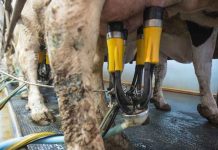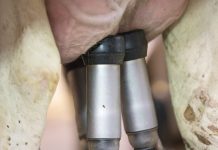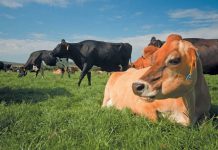Any time I discuss losses in dairy cattle farming, farmers quickly switch to diseases, thefts, poor milk production and poor market prices for milk. Rarely do people connect the structures on the farm with death of animals.
Surprisingly, upon probing, many farmers confess to having lost valuable animals through death or serious injury due to structures that form part of the dairy unit.
I visited a farm in Nyandarua two weeks ago and a heifer treated the farm manager and I to a scary stunt. We were almost exiting the dairy unit of 120 cattle when the heifer did the unthinkable.
It ran at the top speed towards the exit of the dairy unit. I looked in the direction of the exit and saw the concrete wall was high enough, but not tall enough for a determined heifer seeking to jump over.
I shouted to the manager to ran to the end of the gangway to restrain the animal. Animals may not understand our language but they surely decode the various tones of our voices. The heifer stopped short of jumping over the wall and placed her head over the concrete, looking anxiously into the distance.
She appeared to have been determined to jump over. Looking at her, I realised she was on heat and possibly imagined there was a bull out there in the compound or far beyond.
“You have saved me?” the manager said as he marvelled at the disaster that could have happened.
He had never thought of the danger that lurked beyond that wall on which the heifer confidently rested her neck. While the interior height of the wall was about 5 feet, the external was a scaring 12 feet. The dairy unit was built on a steep slope.
To have a fairly flat floor, the lower side of the unit had to be raised. The poor heifer would have plunged 12 feet to her death in a bid to fulfil her natural urge of breeding. She was lucky.
I advised the manager to raise the wall with metal stands and runners for an additional 2ft. In the meantime, he instructed the stockman to move the heifer to a more secure pen and arrange for insemination.
When building dairy structures, keenly review all aspects of safety in the unit. A farmer should use structural designs recommended by experts.
In June, I visited a farm in Nyeri where four valuable dairy cows had died of fractures arising from the structures of the partitions in the sleeping cubicles.
Two of the cows had fractures of the spine. In one case the fracture was at the middle of the back while the other broke at the lower chest.
Medically, we would say at the upper lumbar and lower thoracic spine. The cows had become paralysed after the fractures and had to be slaughtered.
The injuries were caused by the triangular steel tube partition in the sleeping cubicle. The structure was nice and durable, but it had a wide space.
Normally, when cows sleep in a cubicle next to an empty one, they sometimes get the impression that they are in an area without partition.
They then rise, put the head through the triangular space and proceed to stand. The back hits the upper metal partition instantly breaking the spine.
That was what happened on the farm.
You see, a cow stands up with a lot of force because the leg muscles must push the massive body up from the lying position. It is that force that breaks the spine once it comes into contact with the hard unyielding metal partition.
The other two cows had broken their legs from the same metal partition. The lower member of the triangular metal frame was fixed at about six inches from the floor to avoid rusting. When the cows lay down, some of them stretched their legs and the hooves went across the cubicle under the metal frame.
When they tried to stand up, the leg would be trapped under the bar. The cow would increase the standing up force in an attempt to free the leg, thereby breaking it at half way between the hoof and the hock or heel joint.
Cows with broken legs are normally slaughtered because their weight does not allow the fracture to heal. Further, the cost of keeping a cow restrained to treat the fracture and the actual cost of treatment far outweighs the economic value of the animals.
Another structure that kills cattle in the zero-grazing unit is the unsecured manure disposal pit. I have seen calves and sometimes cattle breaking out of the unit only to plunge into the manure disposal pit. I recall a case of a valuable Friesian heifer calf that drowned in a manure pit. Farmers must ensure that manure pits are well isolated and have a secure fence.
Dairy cattle that graze in open fields may fall victim to tree stumps, holes and broken fences among other hazards. In my early practice days, I once had the difficult task of rescuing a cow whose hind quarters were stuck in an abandoned pit latrine.
The owner had shifted the farm workers houses from the area to provide walking space for the animals. He, however, never remembered to fill the pit latrine after demolishing the enclosure.
As you engage in dairy farming, remember to identify and remove potential hazards from the farm. It is good to appreciate that what may be a useful structure today may become a hazard tomorrow.





